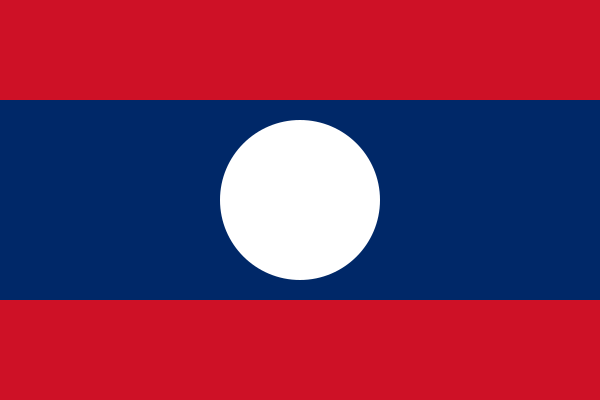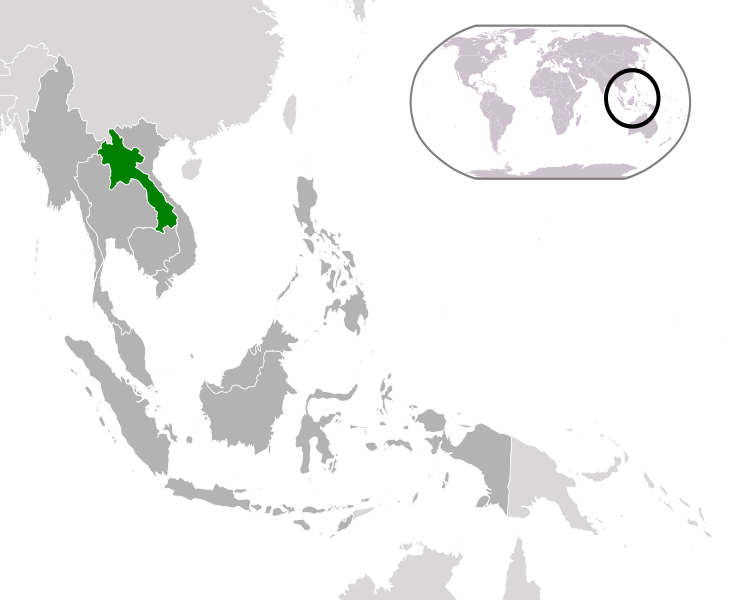 Laos (pronounced /ˈlɑː.oʊs/, /ˈlaʊ/, or /ˈleɪ.ɒs/), officially the Lao People’s Democratic Republic, is a landlocked country in Southeast Asia, bordered by Burma and People’s Republic of China to the northwest, Vietnam to the east, Cambodia to the south and Thailand to the west.
Laos (pronounced /ˈlɑː.oʊs/, /ˈlaʊ/, or /ˈleɪ.ɒs/), officially the Lao People’s Democratic Republic, is a landlocked country in Southeast Asia, bordered by Burma and People’s Republic of China to the northwest, Vietnam to the east, Cambodia to the south and Thailand to the west.
Laos traces its history to the Kingdom of Lan Xang or Land of a Million Elephants, which existed from the 14th to the 18th century.
After a period as a French protectorate, it gained independence in 1949. A long civil war ended officially when the Communist Pathet Lao movement came to power in 1975, but strife between factions continued for several years.
44% of the population lived below the international poverty line of the equivalent of US$1.25 a day according to data from 2006, though the CIA World Factbook currently places this figure at 26%.
The Lao economy is heavily dependent on investment and trade with its neighbors, Thailand, Vietnam, and, especially in the north, China. Pakxe has also experienced growth based on cross-border trade with Thailand and Vietnam.
Subsistence agriculture still accounts for half of the GDP and provides 80 percent of employment. Only 4.01 percent of the country is arable land, and 0.34 percent used as permanent crop land, the lowest percentage in the Greater Mekong Subregion. Rice dominates agriculture, with about 80 percent of the arable land area used for growing rice. Approximately 77 percent of Lao farm households are self-sufficient in rice.
Theravada Buddhism is a dominant influence in Lao culture. It is reflected throughout the country from language to the temple and in art, literature, performing arts, etc. Many elements of Lao culture predate Buddhism, however. For example, Laotian music is dominated by its national instrument, the khaen, a type of bamboo pipe that has prehistoric origins. The khaen traditionally accompanied the singer in lam, the dominant style of folk music. Among the various lam styles, the lam saravane is probably the most popular.

Notes from Wikipedia








